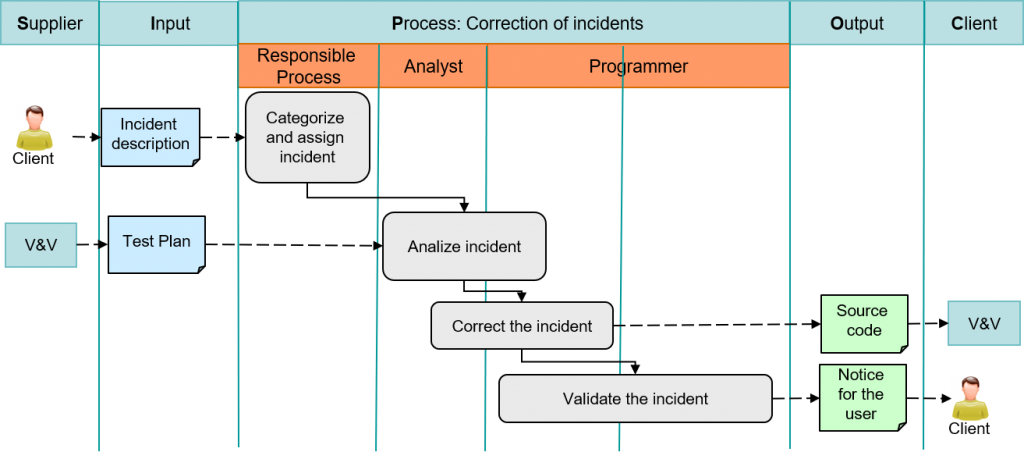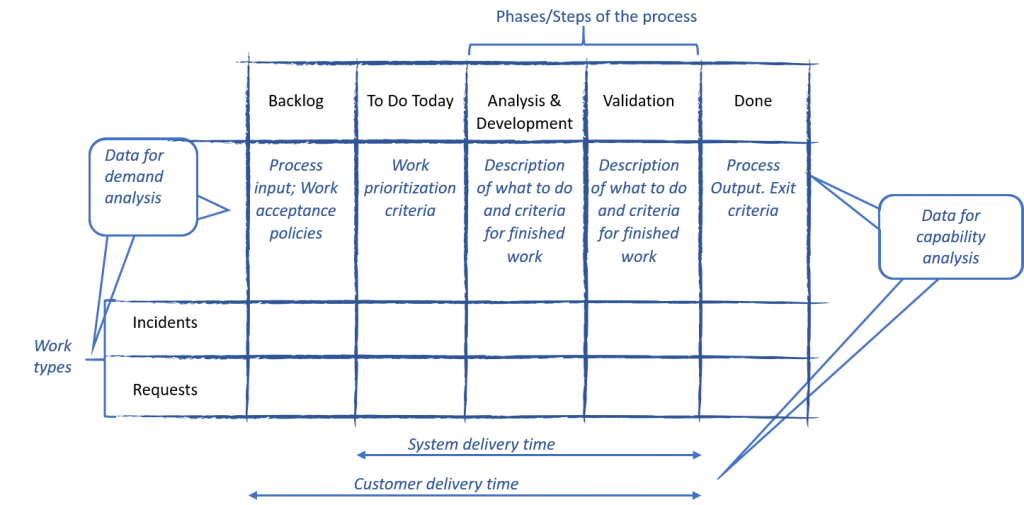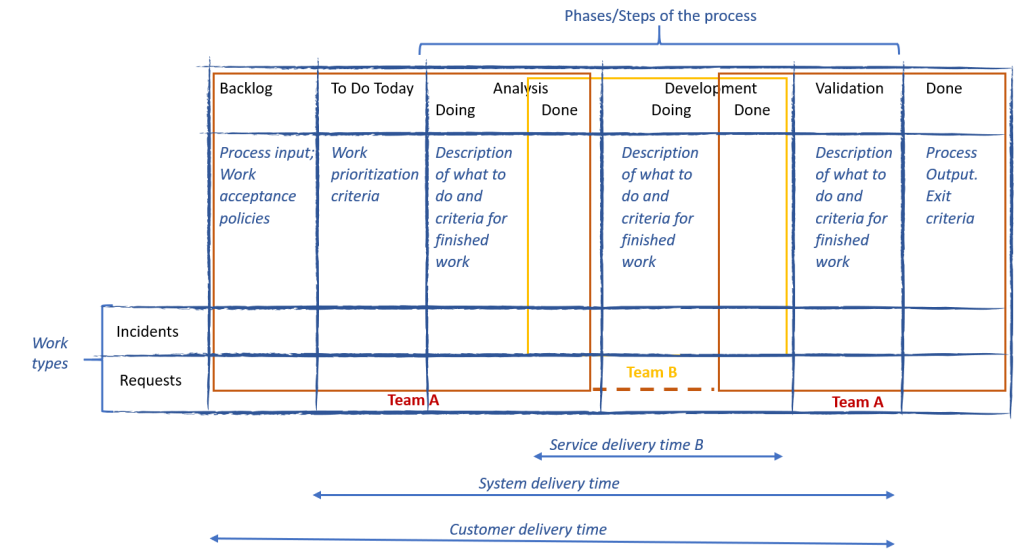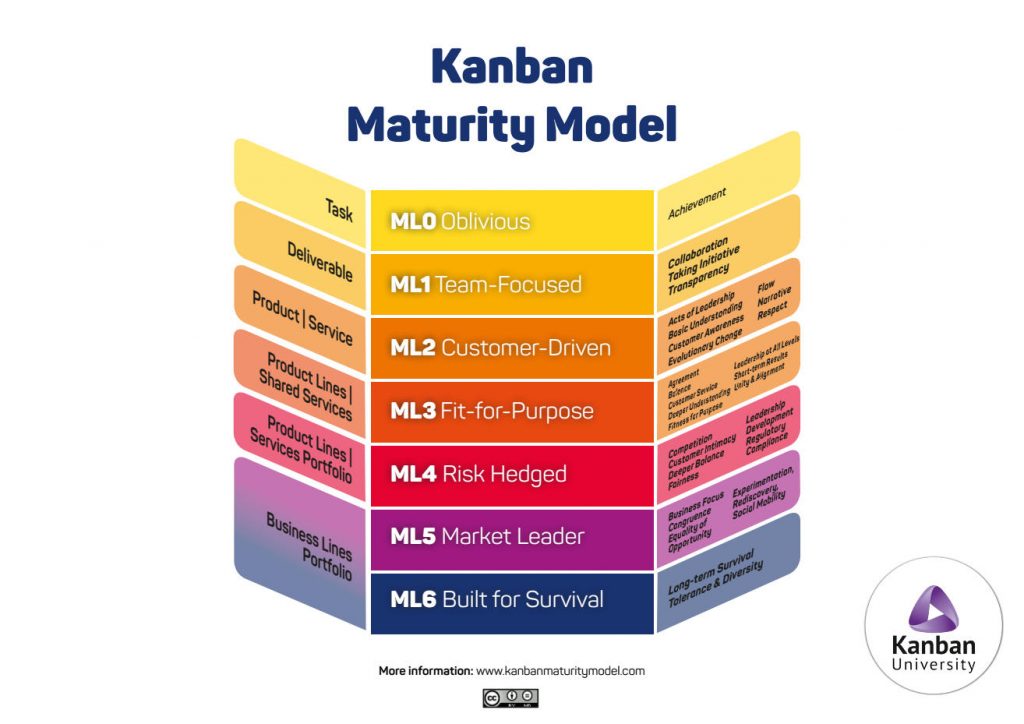Having the definitions of several or all organizational processes allows to unify and integrate the necessary infrastructure, such as tools, templates, information repositories, internal training materials, standard reports, etc.
Why all organizations, classic and Agile, need to define and continuously optimize their processes?
Having the definition of a process which reflects how work is done, brings several benefits to the organization such as:
- Establishes key aspects of the process:
- Where the work comes from and who are the requestors/clients
- What types of work clients can request
- What entry information the client has to provide to avoid process stops or setbacks due to lack of information
- What steps must be taken to process the input information and produce the desired result
- What are the acceptance criteria for the process outcome
- Who receives the process results
- Facilitates decisions of what needs to be improved in the process and how. Standardizing the process is the first step towards improving its efficiency.
- Facilitates the validation of the improvement actions against expected outcome
- Easier introduction of new people to the process
- Straightforward definition relevant metrics, necessary data, and analysis procedures.
Having the definitions of several or all organizational processes allows to unify and integrate the necessary infrastructure, such as tools, templates, information repositories, internal training materials, standard reports, etc.
Classical approach to process improvement
- Define and document the process map.
Usually using SIPOC diagrams (see an example in Fig.1)

Fig.1 Example: SIPOC diagram for the Correction of incidents process
This means that the following is defined for each process (complete list):
- Who is the client or another process that requests the process result
- Input information: data, requirements, user stories, specifications
- Acceptance criteria for the input information
- Process steps
- Roles involved in the process execution
- Exit criteria that allow verifying whether the outcome meets client’s expectations
- Verification steps
- Who or which process the result is delivered to
- Metrics associated with the process
- Carry out process improvement:
- Assign to a role (Process Owner) the responsibility to keep the documentation of the process updated
- Give training in the standard process to the people who execute it
- Periodically check the conformity of the real practices to the process description. This implies that someone, in the role of an internal or external auditor, has to do these assessments
- Monitor the performance of the process using the defined metrics and check that it is within the acceptable limits. In case of deviations, analyze the causes and define relevant actions.
- Require that the Process Owner, together with the people involved in the process, make improvement suggestions
- Periodically analyze the suggestions and take improvement actions. This creates the need to have a Process Improvement Committee that meets periodically to assess the suggestions presented.
Disadvantages of the classic approach:
- Bureaucratic
- It takes a lot of effort to discover and document the processes. Typically, this is done by a Process Engineering Group through interviewing workers who do the job on a daily basis.
- Training in the process has to be given to the people who execute it
- Slow adaptation to changes in the work context. Changes have to approved by the Process Improvement Committee.
- Over time, the difference between the process description and the actual process increases
- It is necessary that an independent auditor evaluates the compliance of the process to its description.
Kanban approach to process definition and improvement
Where do we find the definition of a process when we manage it with a kanban system?
Let’s see an example:
A team uses a kanban system to manage the two processes they perform:
a. Incident correction
b. Resolution of information requests
The kanban board they use has the following design:

Fig.2 Kanban board for the management of a process (service)
The definition of the process is in the same kanban system:

Fig.3 Kanban system for the management of a process (service)
The performance metrics of the process are obtained from the kanban system itself. For example:
- Demand for the process
- Capability to finish work (incidents or requests) per day
- Delivery time
- Blockage time
- % of bad quality
- Efficiency
- Other metrics
In case that the process involves two or more teams, it would have a design such as this one:

Fig.4 Kanban system for the management of a process that includes two sub-processes (services) carried out by teams A and B
Advantages of the process definition through Kanban:
- The description of the process is embedded in the kanban system that is used for managing it, i.e. it does not require any additional effort to discover and document it.
- Easy to maintain and adapt. Modifications to the policies and design of the kanban system do not entail effort
- Once the process definition is agreed, there is no need to give training because people will understand the causes for the changes and will see the new policies on the board itself
- Improvement ideas arise naturally, observing the workflow and detecting the following:
- What slows it down -> identify blockers and re-work causes
- Which policies or decision-making criteria do not work well
- What has changed in the demand
- What show the indicators, etc.
In addition, all the people involved in the process can identify and suggest opportunities for improvement
Process improvement in the Kanban Maturity Model
The KMM is the model that links the management practices of work, culture and business results of an organization.
The improvement of the processes evolves together with the growth of the organization’s maturity.

ML1: Team-Focused
- The process is emerging, it is still not defined consistently
- The column In Progress (Doing) on the proto-kanban board hides much information about how the work is processed
- The types of work and the basic guidelines for process management and execution are defined, although these could change often because they depend on the “experience” of the superior manager or the position of the requestor.
- The understanding of the client is improving
- The teams are typically overloaded and under stress, produce errors and re-works (waste), however they devote very little time to stop, analyze the situation and take improvement actions
- Dependencies between processes are managed in an ad-hoc manner and opportunities for improvement are rarely concluded
- Process results are not stable from the customer’s point of view. The process is not sustainable.
- The key at this level is to limit the WIP (work in progress) to reduce the overload of people and improve the flow and process performance. After that, focus on connect correctly adjacent processes and improve the ent-to-end flow.
ML2: Customer-Driven
- The process is defined and is consistent; it is displayed on the kanban system that is used for managing it
- Work management policies are defined
- Blockers and re-work are analyzed and actions are defined to reduce their impact on delivery times and the product/service quality
- Workflow is managed through several sub-processes (Fig.4); for this, an aggregated team kanban board can be used
- The policies for managing dependencies between processes and sub-processes are still not clear enough. Therefore the entire flow is still unstable and rough. Under stress, the management and the process outcome can get worse
- As a consequence, from the client’s perspective, the process outcomes are still unpredictable and the quality of the complete service is unsatisfactory
- Thanks to the visualization of the process, all the people involved in it can identify and suggest improvements
- Ideas for process improvement arise naturally observing and studying what the flow slows (blockages, re-work, many emergencies, priority changes), which policies and criteria do not work well, how demand is changing, etc.
- The key to this level is to establish the dependency management policies between the different processes (coordination of different teams) and unify the work prioritization criteria in order to improve the complete service from client’s point of view. Also, limit the WIP in the entire process (composed of multiple sub-processes) in order to improve performance and increase the predictability of the end-to-end service.
ML3: Fit-for-Purpose
- Processes, workflows, policies and criteria for managing sub-processes and processes (Fig.4) are defined and agreed upon and applied consistently
- Demand patterns and process capability are understood based on data
- Triage discipline is institutionalized
- This information and understanding are used for defining concrete improvement actions
- Service levels are defined to facilitate demand shaping and improve service (process) predictability
- Process teams manage blockers and rework based on data, decreasing their impact on the entire service
- The end-to-end workflow is stable and balanced
- Service Delivery Reviews are conducted periodically. Specific improvement actions are defined for each kanban system, including policy adjustments and decision-making frameworks.
- KPIs are used to monitor service fitness for purpose
- The coordination between different processes and sub-processes is based on policies and shared decision-making frameworks focused on the expectations of the clients and the business objectives.
- Both the process and its outcomes are consistent. The process works well under stress as well.
- Clients are satisfied with the services
- The key to this level is to balance the demand and the capability of the process and introduce service levels and KPIs that ensure a stable, predictable and high quality service level for the customers
ML4: Risk-Hedged
- The processes and key sub-processes are managed based on a quantitative and statistical understanding of their capability
- This allows focussing the improvement actions on increasing workflow efficiency, eliminating waste and reaching better economic results
- Process teams use process performance statistics to forecast and address the risks associated with meeting service levels.
- The processes performance is robust
- Clients and stakeholders are satisfied with obtained results
ML5 Market Leader and ML6 Built for Survival
At maturity level 5, the processes and the business are completely suitable for their purposes. The focus of the improvements is on increasing productivity and economic margins without affecting the quality of the products and services delivered to the customer. The culture of continuous improvement is widely introduced in the organization. The organization is focused on making flexible use of the available capacity to strengthen its competitiveness.
At maturity level 6, the entire organization works congruently and is able to re-invent what and how they do in order to survive in changing market conditions.


